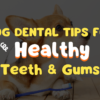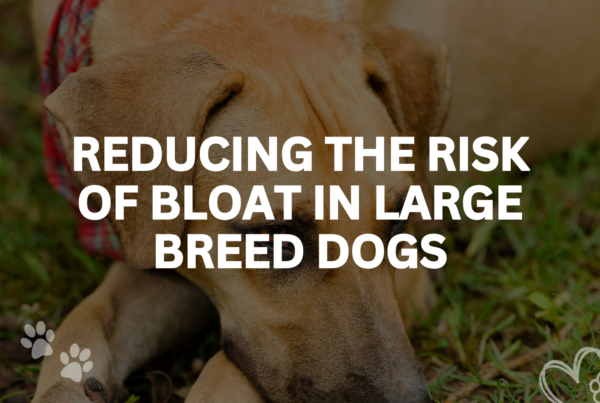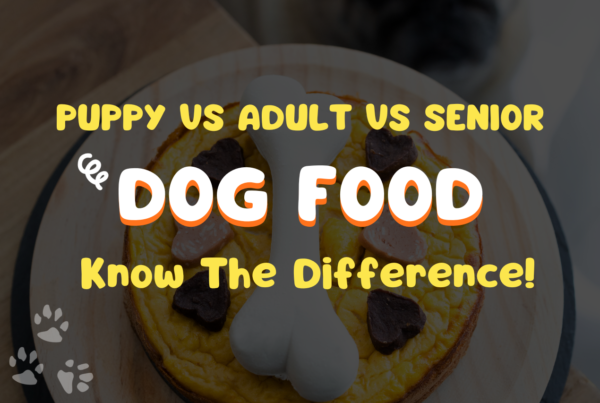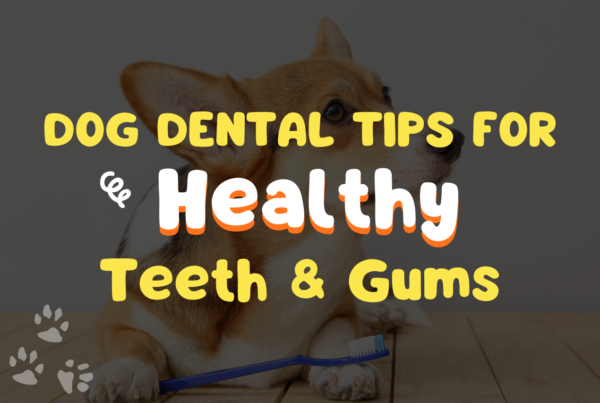
Everyone loves a smiling puppy. But how much do you really know about what’s going on inside your dog’s mouth? How many teeth do dogs have? It makes sense to understand more about your dog’s teeth so that you are aware of how they should look and how to care for them in order to provide the best possible care for your dog in every manner.
When do Puppies Get their Deciduous Teeth?
Unlike humans, puppies are born without teeth, and it isn’t until they are 3 to 4 weeks old that their puppy teeth (officially known as deciduous teeth) begin to emerge.
By the time they reach the age of three to five months, they will normally have all of their puppy teeth. In this category are the incisors, canines, and premolars. Some dogs, particularly toy and tiny breed dogs, take longer than others to develop their puppy and adult teeth, and this is especially true in some breeds.
If your puppy’s teeth do not fall out on their own and instead remain in the puppy’s mouth, they are referred to as retained teeth In this situation, overcrowding can occur, resulting in incorrect placing of adult teeth as well as greater susceptibility to periodontal disease.
Retained teeth are typically seen as a genetic issue. It can occur in any breed of dog, however it is more common in small breed dogs. These teeth will have to be surgically removed by your veterinarian in order to make place for the adult teeth.
When do Dogs Get heir Permanent Teeth?
When it comes to dogs, the age of eruption of permanent teeth ranges between 3 and 7 months of age. Adult dogs have 42 permanent teeth in their mouths, but a human only has 32 permanent teeth on average. In total, they have 20 teeth in their upper jaw (called the maxilla), and 22 teeth in their lower jaw (called the mandible).
Can Dogs Regrow Adult Teeth if They Lose Them?
This is a common misconception about dogs that is frequently questioned about by dog owners. Dogs, unlike certain other species such as sharks, are unable to recover missing or damaged teeth. If they lose an adult tooth, they will be toothless for the rest of their lives, exactly like humans.
This is why it is so vital to brush and floss your pet’s teeth on a regular basis. They need to be able to last a lifetime.
Tooth Composition
A tooth is made up of two parts: the crown, which is the area above the gumline, and the root, which is the region below the gumline. The crown is covered in enamel, which is the toughest mineralized tissue known in the body.
The root is protected by the cementum, which is linked to the periodontal ligament. Dentin, which is softer than enamel, constitutes the majority of the tooth’s structure. The pulp is made up of living tissue that contains nerves, blood arteries, and lymphatics on its inside surface.
The Four Types of Teeth
There are four different types of teeth in your adult dog’s mouth, and each one is responsible for a specific function in the mouth. Due to their wolf heritage, dogs require different types of teeth for a variety of diverse functions. Listed below is a description of each of the four types:
Incisors
What’s the first portion of your dog’s grin like, exactly? The incisors, of course! Specifically, they are the little teeth that are right in front of him on both the upper (or maxillary) and lower (or mandibular) halves of his jaw. In addition to scraping at morsels of flesh, he grooms his coat with these tools.
Canines
The canines, sometimes known as “fangs,” are located behind the incisors. They have both above and below, long, pointed, and especially sharp teeth. Canine teeth are used to rip meat, hold things in place, and form part of a snarl.
Any dog, that bares his canines into a form of sneer while not waving his tail is giving you an indication that something is wrong with him. During play, though, your pet may wiggle his hind end and elevate his lips into a big ol’ goofy canine grin as he enjoys himself.
Premolars
The premolars appear right behind the canines. Adult dogs have a total of 16 premolars, with eight on the top jaw and eight on the bottom. These teeth are utilized for shearing through food and crushing it into powder form.
Actually, the premolar teeth can have between one and two roots per tooth, which serve to anchor them in the mouth.
Molars
A dog’s molars are located in the back of the mouth, behind pre-molars. They can have a similar appearance to premolars. On the upper jaw, there are four molars, while on the lower jaw, there are six. Molars are tools that are used to grind food into little pieces so that it is easier to swallow and digest it.
They can have anywhere from three to one root that holds them in the dog’s mouth, depending on their size.
The Largest Tooth in the Middle of Your Dog’s Upper Jaw
The upper fourth premolar, commonly known as the carnassial tooth, is the largest tooth in a dog’s mouth and is the largest of the canine teeth. It’s unique shape and tooth surface are intended to assist in shearing, crushing, and holding.
This explains why you see dogs grasping chew toys with the side of their mouths and gnawing madly on them. This is also the reason why you have to replace so many chew toys on a regular basis. Next time, instead of blaming your dog, blame the carnassial teeth.
Tooth Anatomy Report from Your Vet Tech
If your dog undergoes a dental cleaning under anesthetic or without anesthetic, your veterinarian should provide a complete dental chart or report to show which teeth experienced difficulties or had to be pulled. Being familiar with the different sorts of teeth will make it easier to follow.
Are You Struggling to Brush Your Dog’s Teeth
Many people have difficulty with this basic operation. You are not required to brush your dog’s teeth on a daily basis. So, what should you do in this situation? You should first have your pet’s teeth thoroughly cleaned once a year by veterinary technicians who have received specialized training.
When a pet parent is unable to brush their pet’s teeth on a daily basis, this is possibly the most crucial thing they can do for their pet. You can also have dental x-rays taken to ensure that there are no hidden problems hiding beneath the gums that you are not aware of.
Following that, be sure to provide your dogs chew treats that have been approved by the Veterinary Oral Health Council (VOHC) to aid in the removal of plaque and tartar. Many of them have unique compounds that are designed to help minimize harmful oral germs in the mouth.
Rinse the mouths of your dogs on a regular basis with an antimicrobial rinse that is designed to remove harmful bacteria. This also contributes to their breath being extremely kissable. Finally, check inside your dog’s mouth at least once a week to ensure that everything appears to be in good condition and smells pleasant.
As you can see, taking care of your dog’s mouth isn’t that difficult after all!
Final Thoughts
Maintaining the health of your pet’s mouth is extremely vital to their overall health and enjoyment of life. It is important to schedule an appointment with your veterinarian as soon as possible if you discover that your dog is losing teeth, has loose or wiggly teeth, or is suffering from gradually worsening breath.
Even though it appears that your pet has only lost one tooth, it is likely that they have a number of unhealthy teeth in their mouth that are giving them distress. Don’t wait until your pet isn’t eating anymore before scheduling a dental examination with your veterinarian.
Make use of your pet’s annual exam as an opportunity to talk about your dog’s teeth and overall dental health before an issue occurs.






